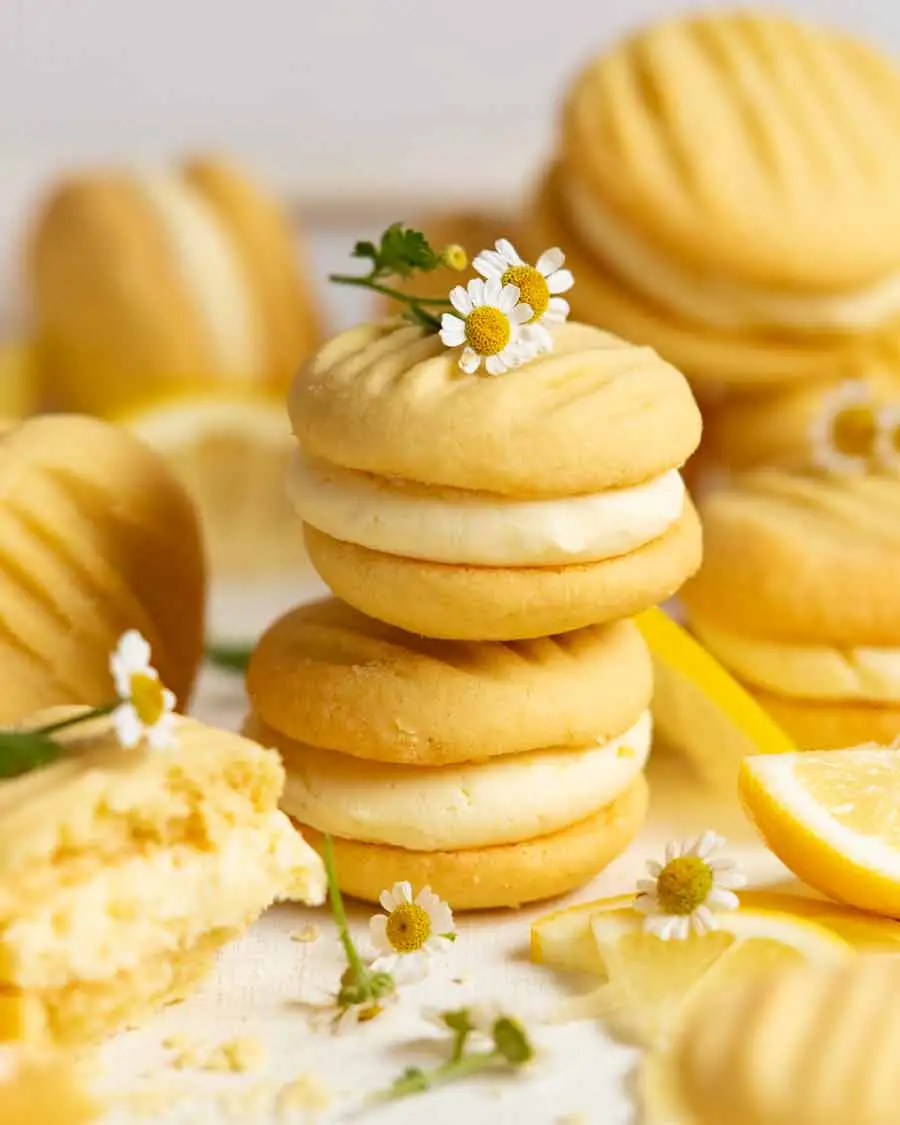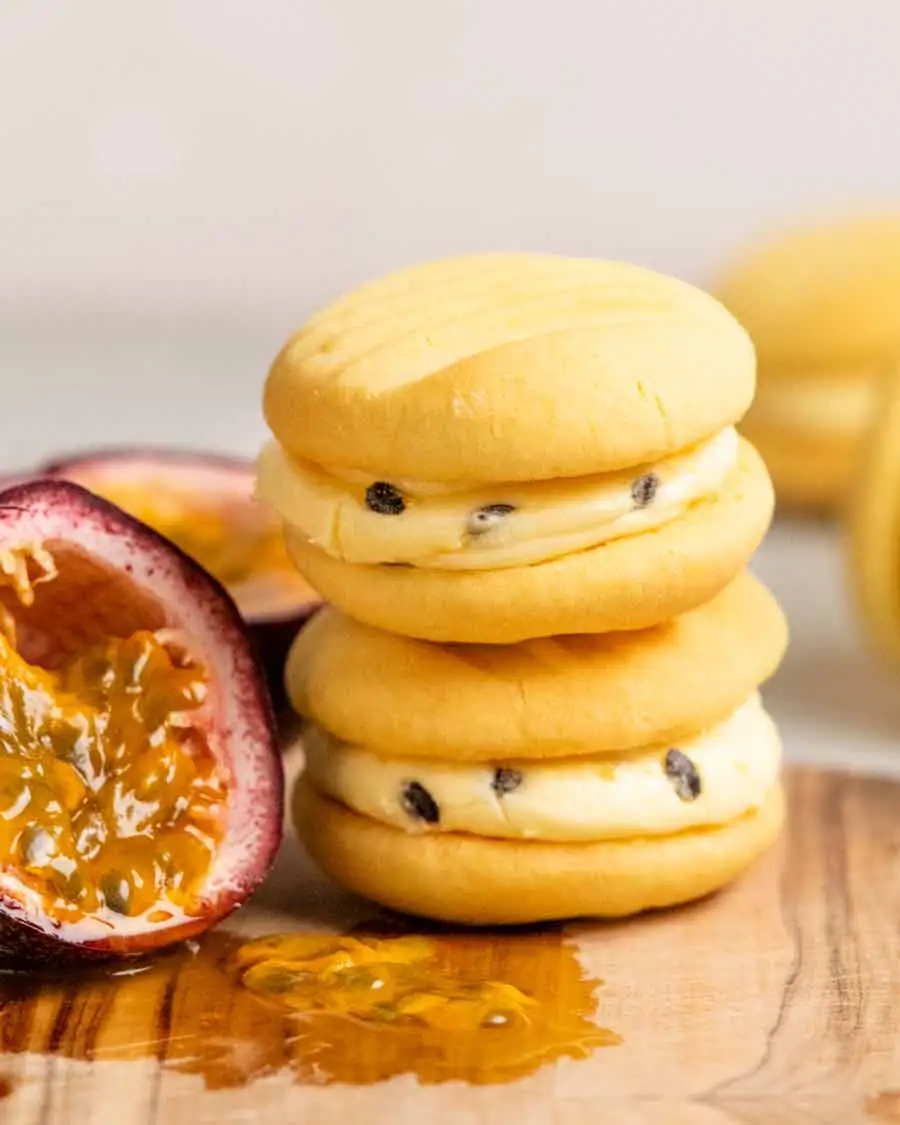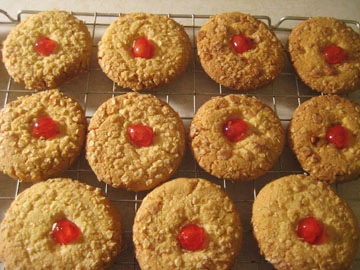What's in a name?
- rosemary
- Dec 10, 2023
- 5 min read
"Let it melt in your mouth, and enjoy the moment" Farmhouse Biscuits

Once again I was sucked in by a photograph but also by the notion of the marriage of marmalade and melting moments. The photograph is of Lady Marmalade melting moments - a recipe from Alice Zaslavsky on the SBS website although I think I found the link elsewhere. I noted it as a possibility for one of my oddments posts, but when I started look into melting moments I quickly became confused and so decided to have a go at a 'proper' post.
The confusion derives from names - the same name for different things and different names for the same things. Not to mention where those names or the recipes came from anyway. The names in question? - melting moments, yo-yos, custard creams, thumbprint biscuits, jam drops and split-second cookies. There are probably more because one thing always leads to another in Google - it is after all 'the world-wide web' we are looking at here.

I'll begin with those melting moments - an Australian classic - and this is perhaps the clssic recipe for Melting moments because it comes from The Australian Women's Weekly, who, I think, got it from The Country Women's Association. For it is indeed the sort of thing that you would find in the baking tent at country fairs and The Royal Show. Two soft biscuits impressed with the tines of a fork, sandwiching a creamy, mostly lemon or passionfruit flavoured centre of, essentially, icing. The biscuits crumble and melt in the mouth, mingling with the creamy centre. It's an evocative name which is somehow more than a texture. Probably because of the addition of the word 'moment' which evokes memory, nostalgia, joy - a Proustian madeleine thing. Besides they are so pretty and so almost elegant. No too elegant like macarons - they are more homely than that. And they have to be pale. Brown is just wrong. No wonder somebody called them 'the queen of retro'.
For the basis of her recipe for Melting moments today's Australian internet star Nagi Maehashi of Recipe Tin Eats also uses an old, old Australian Women's Weekly recipe - a fancier one which was star-shaped and dipped in chocolate.
This might have been where I learnt, that the lightness of the biscuit comes from the absence of eggs, and the use of custard powder, which also provides the yellow colour. Also the choice of sugar, for both the filling and the biscuits themselves:
"Australia – Get packets labelled “SOFT icing sugar” or “icing sugar mixture” not pure icing sugar (packet labelled as such). Soft icing sugar is sugar mixed with cornflour/cornstarch, tapioca that is used for fluffy frostings. Pure icing sugar (packet labelled as such) is made with 100% sugar only and is used for icing that sets hard, like royal icing." Nagi Maehashi
You learn something every day.
Hold that thought about the custard powder because I had also seen references to cornflour being the lightening factor. And here we come to our first confusion over names and ingredients. I soon became aware of things that looked identical called yo-yos. These Passionfruit yo-yos from the NZ Herald are an example. Also Yotam Ottolenghi and Helen Goh's Custard yo-yos with roasted rhubarb icing. They're surely the same thing you think. Well apparently the subtle distinction is that yo-yos use custard powder and melting moments use cornflour.

No wait a moment - didn't Nagi Maehashi use custard powder for her melting moments? Yes she did and so did a lot of others and vice versa - cornflour in yo-yos - which may be why Peter Gordon on the UK delicious. website called his Mo-yo biscuits, and I have to say they look a bit crunchy and also a touch too brown. Crunchy is not what we are after here. We want melting.
Except in South Australia, and weirdly only in South Australia, Arnott's have a biscuit called a yo-yo. It was apparently first made, maybe as long ago as 1906 by a South Australian biscuit compny called Metz, which was eventually taken over by Arnott's. Even though they are now made in NSW they can syill and only be found in SA.

They are supposedly named for the yo yos which were a craze back in the 90s, which surely can't be right if they date back to the early 1900s, Moreover they are oval not round.
Whilst we are sort of on origins - a word on where our melting sandwich like biscuits came from. Basically I have no idea. The New Zealanders seem to think they are a New Zealnd thing - the Australians say Australia, but neither of them seem to have an origin story, and the British make no claim, because they have their own melting moments. So let's just say antipodean until someone claims otherwise.
For the British melting moments are not at all the same thing. On the left Melting moments biscuits from Great British Recipes and on the right Melting moments from the Wartime Housewife.
These are more standard cookie like - eggs and lard are involved and then they are rolled in either desiccated coconut or rolled oats - and yes, the Scots also claim them. On top you put a glacé or crystallised cherry for decoration. However you would not expect these biscuits to be melting. Or the cherries. So why the name?
Which brings us to Jam thumbprint biscuits the first being from Hugh Fearnley-Whittingstall and the second, rather posher verion - Rhubarb jam thumbprints from Phoebe Wood of our own delicious. To add to the confusion they are sometimes known as jam drops. The cookie, I think, is similar to the British melting moments, but the topping is jam - a really basic biscuit.
You might think that this was the end, but no. When I was looking for melting moments recipes I came across one from Dan Lepard which he prefaced with: "Think of these as custard creams from Down Under." So in one sentence we have an acknowledgement that melting moments are indeed from this part of the world, but also a reference to something else again.

Well, sort of like the yo-yos in that here we have a commercial biscuit which seems to be spawning home-made versions. Indeed I remember custard creams as a favourite biscuit in my childhood. They were a bit special because they had cream in the middle. We didn't have them very often. They were an occasional treat. Arnott's make these too.
They are not soft. They are crunchy, and it looks as if the home-made versions are crunchy too. I suspect the home-made kind are a newish thing fabricated with fancy cookie cutters or embossed rolling pins, so that you get that elaborate curly pattern on top. The lady from Sugar Salt Magic used the fancy rolling pin to make her Homemade custard creams, whilst Prue Leith's Custard creams were cut with a special cutter,

America doesn't really seem to be into these things, but when I had almost given up I found these Melting moments on a website called Sugar Apron which used an Australian kind of dough which was shaped differently, and which didn't have the creamy filling. The lady of the website said she made them as a Christmas treat, and they do indeed look Christmassy.
And then she said the were also called split-second cookies.
The evolution continues.




















Comments